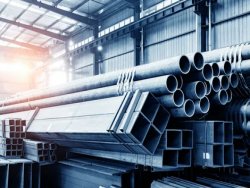According to Orgalim, the new proposal is aimed at supporting steel producers in the EU, but will create a burden on small and medium-sized enterprises. The organization warned that this measure was taken at a time when European technology industries are already experiencing a downturn, including a 5.6 percent decline in turnover, a 1.2 percent decline in employment, and a 3.2 percent reduction in investment in 2024. requirements for importers. These conditions have contributed to the fact that average prices for iron and steel in the EU have increased by more than 40 percent since the introduction of temporary protective measures.
Key elements of the new regulation
The proposed regulation was described by Orgalim as "much more restrictive" than the current protective measures. It includes a 47 percent reduction in total import quotas, a doubling of the non-quota tariff from 25 to 50 percent, as well as the abolition of the mechanism for transferring unused quotas. The draft also introduces a mandatory requirement for verification of origin based on the "melted and bottled" principle, which, as Orgalim warns, will significantly increase documentation and pressure on importers to comply with the requirements.
Cost impact: tariffs outside the quota may rise by up to 1,200%
Orgalim's analysis shows that with the introduction of the new measures, annual tariff costs outside the quota could reach 5.4 billion euros, an increase of 660 percent compared to the estimated 700 million euros paid in 2024. Under more realistic assumptions, for example, that importers will be able to use only half of their quotas, costs could rise to another 9.3 billion euros, representing an increase of 1,200 percent. disruptions and weakening demand.
The cumulative burden of other EU policies
Orgalim stressed that the impact of the proposal cannot be considered in isolation. At the same time, processing plants






